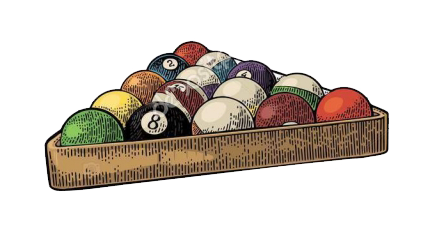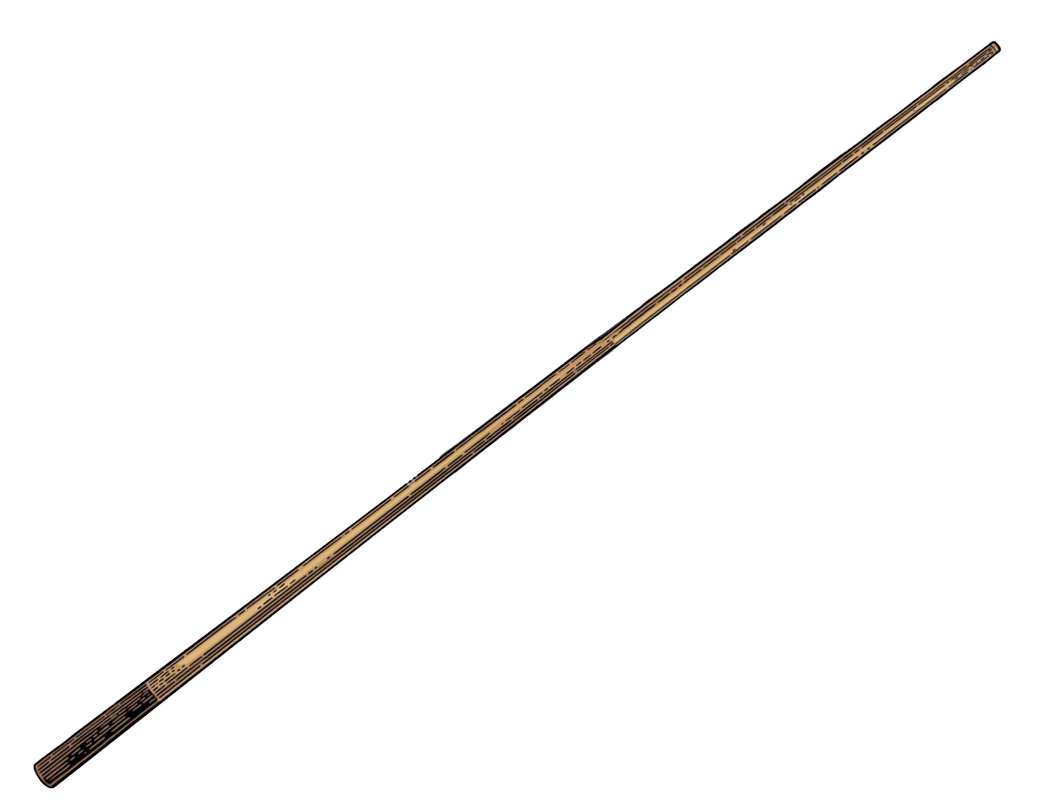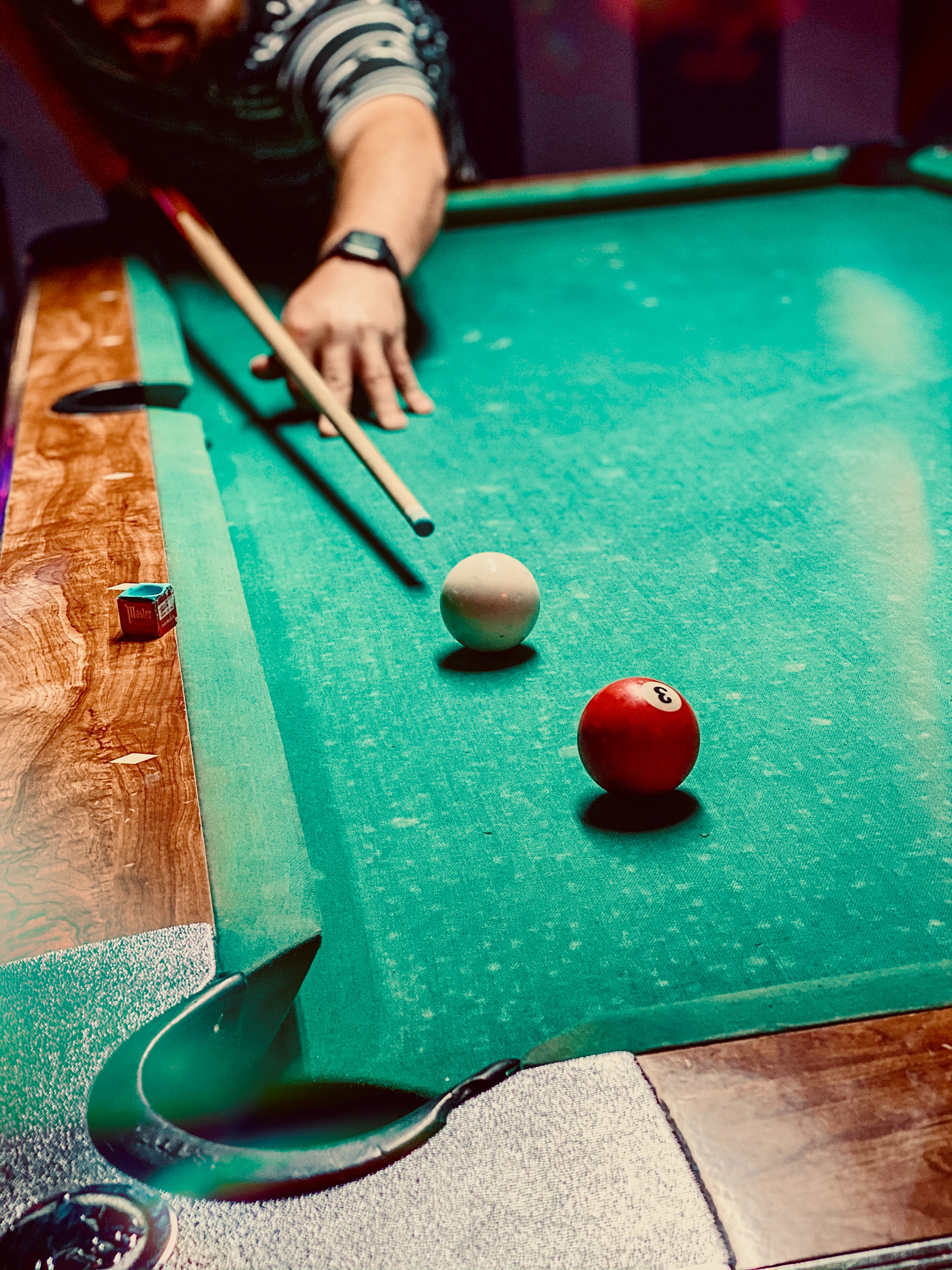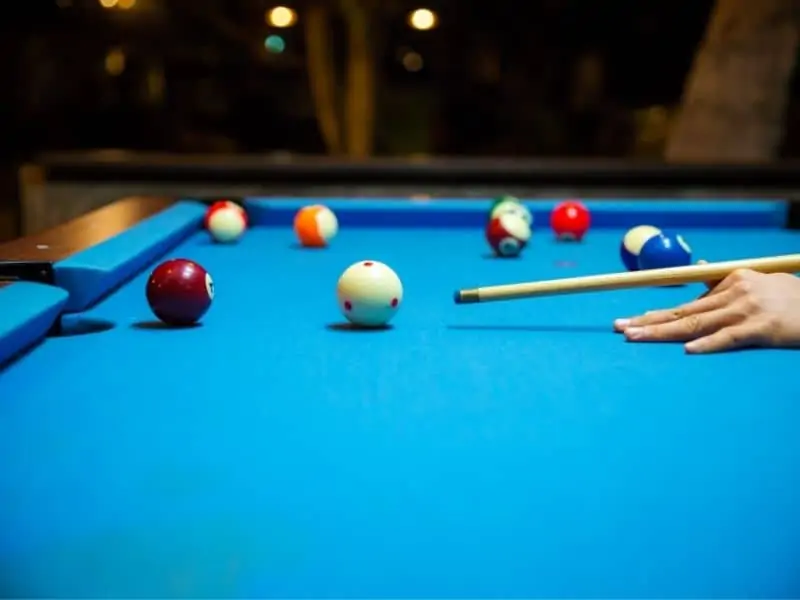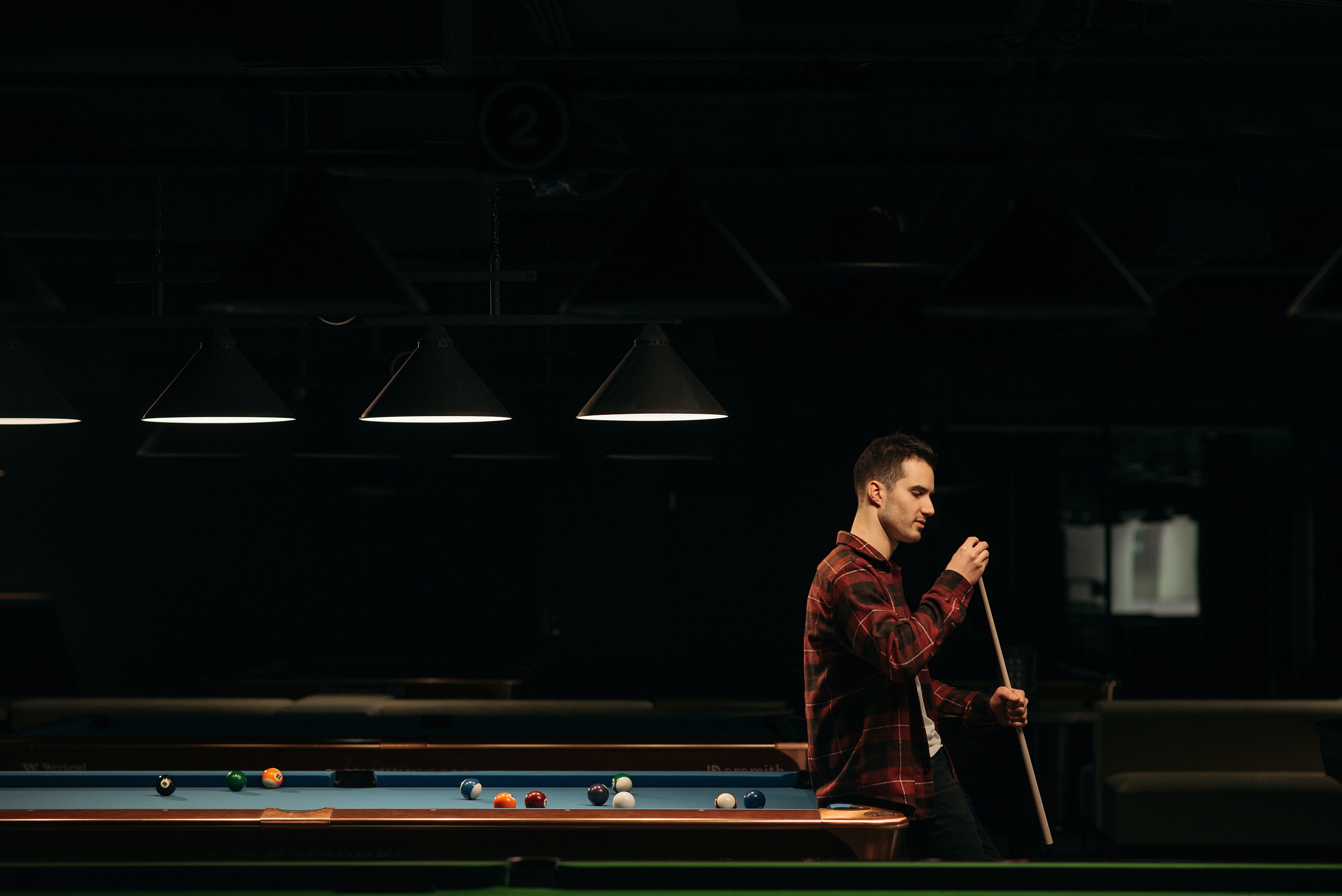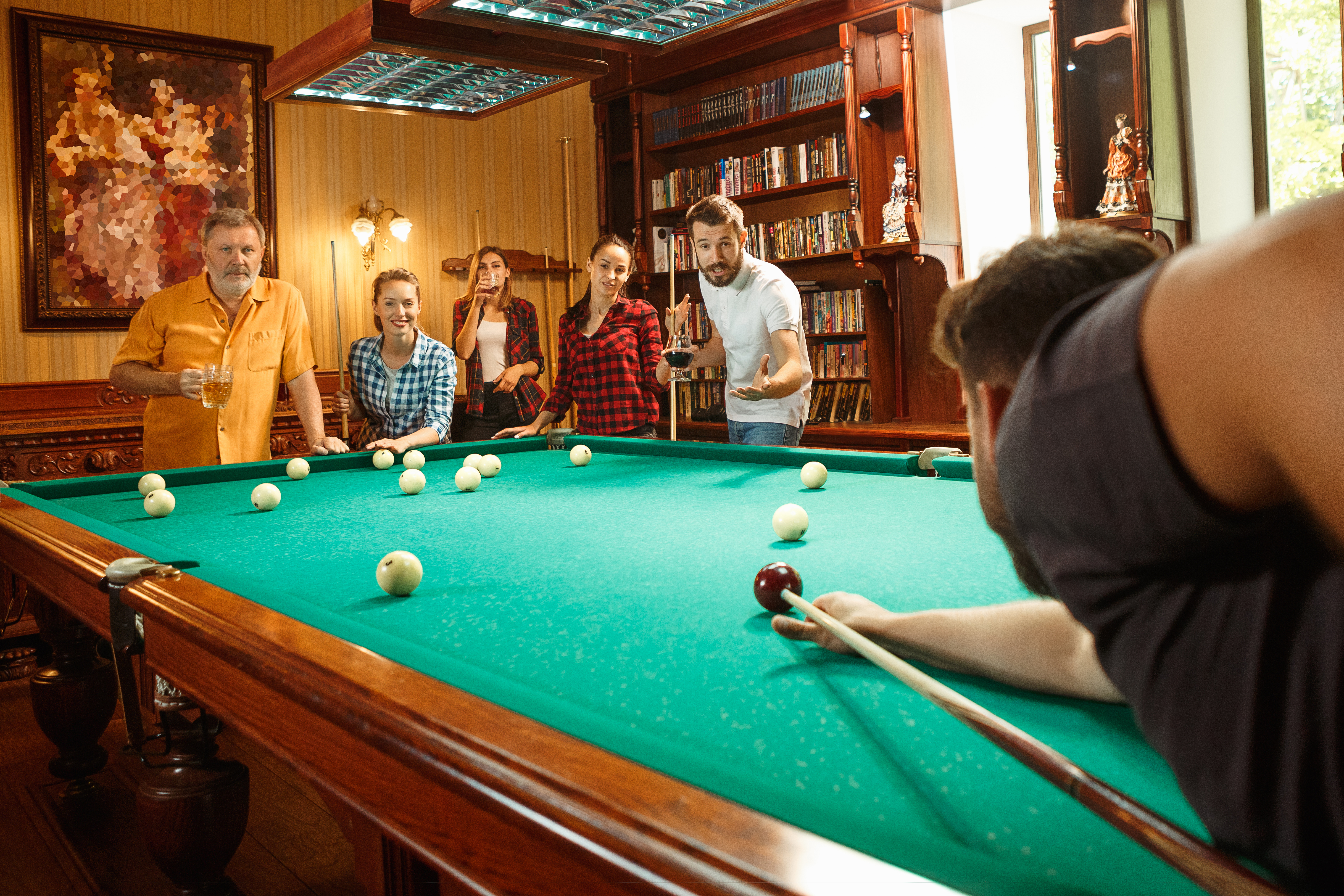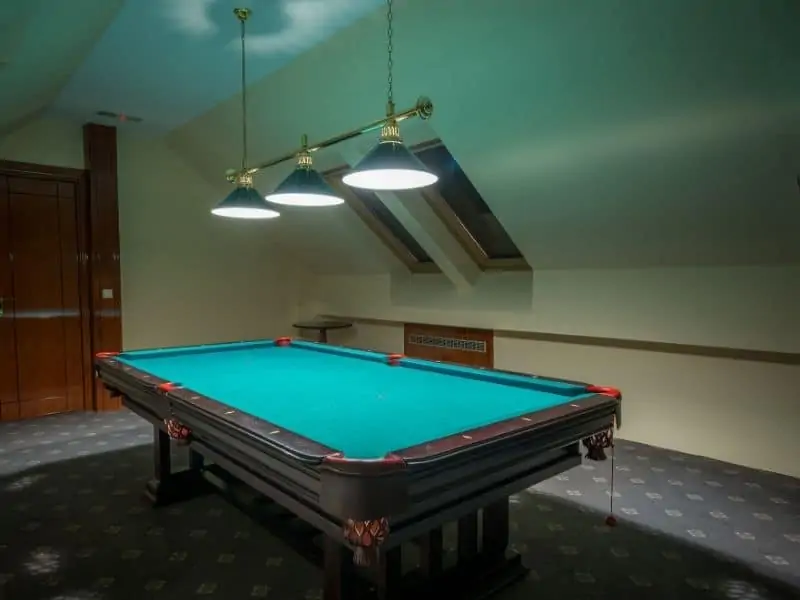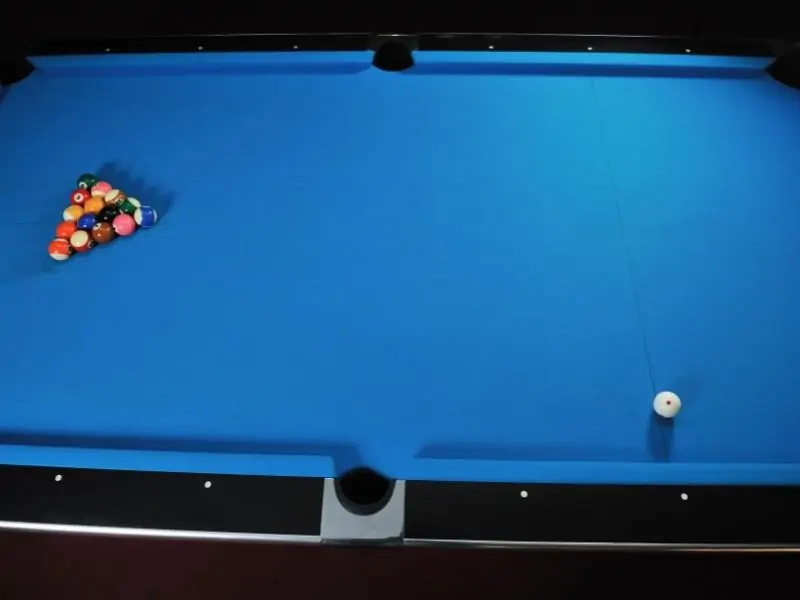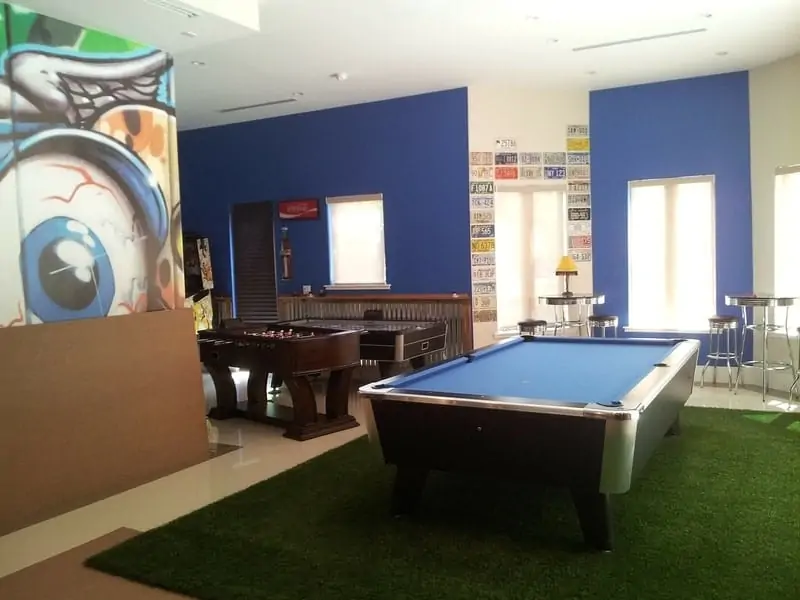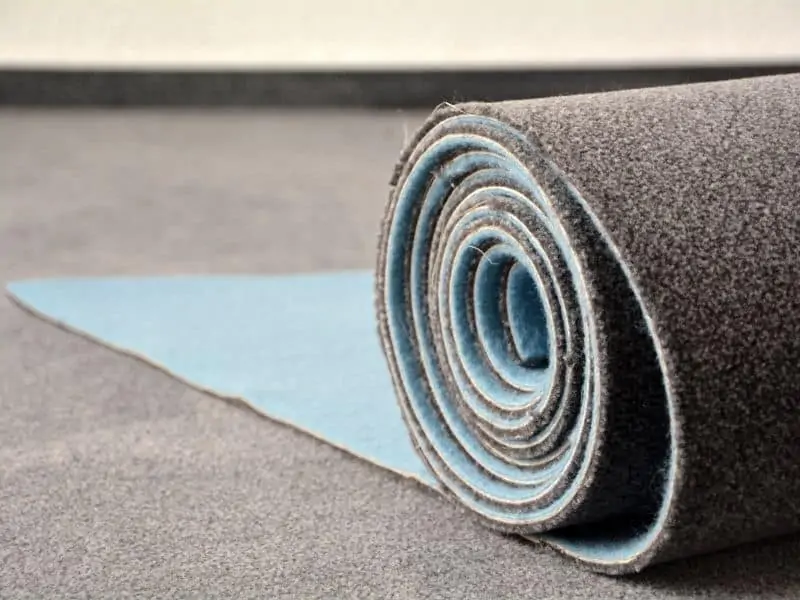Pool is a game enjoyed by millions of people around the world. From the many who play casually on the weekends to the pro’s who travel the globe and compete at the highest level. But regardless of your current skill level, each of us has to start from the bottom. And that means learning the basics.
As with anything new, just getting started can be a bit overwhelming. After all, there’s so much to learn, and if you’re anything like me you want to learn as much as you can as fast as you can. This is especially true if you’re really excited and passionate about the subject. But don’t worry! Pool isn’t rocket science and the rules, equipment, and etiquette aren’t that hard to wrap your head around.
If you’ve never played pool before or are still fairly new and want to learn the ins and outs, the terminology, and how to play, before you actually make it to the table, you’ve come to the right place. In this article we’re going to share with you everything you need to know about how to play pool.
The Basics of Billiards
Billiards, or “pool,” is a parlor game that offers relaxation, socialization, and can be played all one’s life. The game was invented in the fifteenth century in Europe as an alternative to croquet and first gained popular notoriety when King Louis the IX grew an interest in it as an activity to entertain guests.
Since then the game has undergone a myriad of alterations and improvements. Popular games have come and gone, but overall, billiards is still one of the most popular parlor games worldwide, and is particularly popular in America with pool-tables, and even amateur leagues, gracing most night-life establishments.
Equipment

Like most games, playing billiards requires specific equipment, which will usually be provided at most billiard halls, but will need to be attained for home play. Below we’ll cover the basics so you’ll have a better understanding of whats essential for game play.
The Table
The billiards table, or “pool table,” is usually nine feet in length. It’s typical measurements are 100 inches long and 50 inches wide. This size table is what you see professional players using on TV.
Pool tables also come in other sizes as well with dimensions set to scale (ex. an eight-foot table is 88 inches long and 44 inches wide). They are covered in a taught felt that allows for the balls to move at a controllable pace. The interior sides of the table are called rails and are designed to help the balls easily bounce back into the table space. These rails contain six diamonds along the sides, which mark distance and are important to some games.
There are six pockets on a pool table: 1 in each corner and 1 in the middle of each long side of the table. Some tables have actual netted pockets to contain the pocketed object balls, while others contain a chute or gutter system that distributes them into a collection compartment on the rack-side of the table.
Billiard Balls
Fifteen, 2.25-inch diameter object balls, made from cast phenolic resin (rock-hard, dense plastic) are used. These are numbered one through fifteen with object balls one-through-eight painted solid colors and nine-through-fifteen striped. The colors are coordinated based on their numbers. One and nine are yellow; two and ten are blue; three and eleven are red; four and twelve are purple; five and thirteen are orange; six and fourteen are green; seven and fifteen are maroon. The eight ball is black.
The object balls are put in a triangular rack at the beginning of the game, which puts the balls in the order and particular shape required to play each variety of game. The cue ball is a slightly heavier white ball with a slightly larger diameter; it is used to knock into other balls to affect their placement.
Pool Cue/Stick
The cue ball is moved with a cue, a slender wooden stick usually between 57 and 59 inches, with a uniform taper (meaning it increases in diameter from the tip to the butt). The tip of the cue is usually constructed of leather to improve finesse of your shot and protect the condition of the balls.
Pool cues come in a variety of different lengths, weights, and styles. Everyone’s preference in a pool cue is different, and figuring out what you like in a pool cue will come with time. However for most players, a standard length wooden pool cue works just fine.
Chalk is used in a few different ways. Some players will chalk their hands to help remove moisture from there bridge hand. This helps improve stroke smoothness and therefore accuracy as well. Chalking the tip of the pool cue, however, is done in an attempt to produce more “grip” between the tip and the cue ball. This added grip is essential to making good contact with the cue ball and reducing miscues.
Check out our article Best Pool Cues for the Money for more info on buying the right pool cue.
Playing Billiards
In a game of billiards each player has a target group of balls that they are responsible for moving into the pockets. The goal of the game is to knock your balls into the pockets before your opponent knocks theirs in.
The cue is used to push the cue-ball into the object balls with the goal of moving them into the pockets. The most popular varieties of billiards are Eight-Ball and Nine-Ball. We will go over the specific rules for each of these games, and touch on a few other varieties, but let’s first go over some basics that apply to them all.
Racking Up
The game begins with racking the balls into a pointed shape, with the front ball positioned on the foot-spot. The foot-spot is the center of the head-string which is an imaginary line that connects the second of the diamonds on the two sides of the table. Once the balls are tightly held and organized in the rack, the rack is carefully removed and we’re ready to break.
The Break
To break, one player places the cue ball behind head-string on the opposite end of the table. The cue ball is hit hard by the cue and pushed into the group of object balls with the intention of spreading them out across the table and hopefully even making one or two. The goal is to have the balls spread out evenly on the table making it easier to continue pocketing them. The better your break, the better chances you have of running the table.
After The Break
After the break, players take turns attempting to pocket their assigned balls. If a ball is made, they shoot again; if they miss, they lose their turn. While the specific balls you will be responsible for pocketing and keeping in-play will be different for different game varieties, a goal in every game is to not pocket the cue ball.
Accidentally knocking the cue ball into a pocket is called a scratch, which forfeits your turn and gives the other player control of where the cue-ball is placed on the table to set-up their next move. The same rules apply to causing the cue ball to leave the table. A cue-ball knocked off the railing and out of play is also a scratch and has the same results for game-play.
Shooting Fundamentals
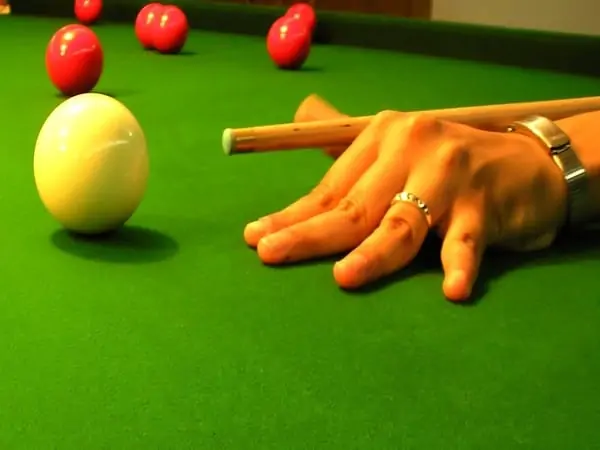
Players grip the butt end of the cue with one hand and place the part of the cue near the tip on their hand to use it as a bridge, a fulcrum point usually atop the base of the thumb. In order to make this positioning effective, it is important to raise the back of your hand toward the wrist, pressing your fingers down firmly. In this manner, the tip’s position can be controlled by the movement of the hand gripping the base of the cue-stick. Perfecting your bridge will determine your success in large part.
Aiming, or lining-up your shot, should involve placing one foot back and one foot forward, distributing your weight on the front foot while leaning forward to position your line of sight down the length of the cue. Making clean contact with the cue ball is critical to an effective shot.
Here’s a quick video going over the fundamentals of shooting and aiming.
Types of Shots
There are a variety of types of shots that can be taken to pocket the object balls, outside of just hitting cue ball straight into an object ball in order to pocket it. With every shot, however, the cue ball must be struck first. You cannot strike an object ball with your cue in any mainstream pool games.
- Straight Shot - A straight shot is the most common shot in the game and is the type of shot beginners should focus on mastering. A straight shot hits the cue ball into an object ball with the intention of placing the object ball directly in a pocket.
- Combination Shot - A combination-shot hits the cue ball into an object ball with the intention of that ball hitting a second object ball. The railing on a billiards table is often used in shots as well.
- Bank Shot - A bank-shot hits the cue ball into the object ball, which then hits the railing to move where you want it.
- Kick Shot - Similar but different, a kick-shot, or rail-shot, hits the cue ball into a rail in order to hit an object ball.
Billiards is all about angles. A billiards player should learn to evaluate the position of the balls and determine which angles are possible with which type of shot to decide the best play to make. The manner in which the cue makes contact with the cue-ball affects your shot as well. Contacting the ball slightly to the left or right will give it side-spin, affecting where it directs the object ball it hits. This side spin is often referred to as English.
Contacting the ball from the top or bottom will put forward-spin or back-spin on the ball and affect where it goes after contacting the target object ball.
Billiard Games
There are tons of different billiard games to learn and master. Each of them having their own set of rules and challenges. Learning different games is a great way to learn how to strategize and expand your knowledge of the game. Below are some of the more popular games played today.
8-Ball

The most popular billiards game is Eight-Ball. In this game, all fifteen object balls are racked in the shape of a triangular shape with the point facing the opposite side of the table. The eight ball is positioned in the geometric center of triangle, and the other balls are arranged according to suit, with stripes and solids interchanging to be even distributed in the rack.
One player is assigned a target groups of balls, or suit, one through seven, or “solids,” and the other player is assigned balls nine through fifteen, or “stripes.” The eight-ball is neutral; both players are potentially responsible for it. The goal is to knock your target group of balls in the pockets before your opponent does theirs.
Once the break happens, the assigned suits are chosen. If while breaking the balls, the player knocks an object ball into the pocket, they will review the make-up and position of the remaining balls and choose whether they would rather be responsible for “stripes” or “solids” (also called “highs” and “lows”) and choose their preferred target group.
The order in which the balls are pocketed doesn’t matter, except that the eight-ball cannot be knocked in until you have knocked in the others. Pocketing the eight-ball or knocking it off the table during play is an automatic loss. Once your target group of balls have been made, you can hit the eight-ball in. This shot requires some additional care; if a player scratches while attempting it, by accidentally pocketing the cue-ball or knocking it off of the table, they automatically lose the game.
Nine-Ball
Nine-ball is the most popular game in professional billiards. Unlike eight-ball, this game is named for the number of balls being used, as only nine of the sixteen object balls are in play. Balls one through nine are placed in a diamond-shaped rack with the nine-ball in the middle. The organization of the other balls is irrelevant and can be random. As with eight-ball, and most billiards games, the ball is placed behind the head-string for the break-shot.
After the break, a player can call for a “push out” depending on whether or not a ball was made on the break, and if they like the initial post-break position of the cue-ball. A push out allows a player to hit the cue-ball somewhere else on the table, in order to make the opponents first turn difficult, but save themselves from attempting a difficult shot as well. This is done to make the game more competitive, because in professional play it is common for players to run the table, or pocket all the balls within one turn.
The goal of the game is to make the nine-ball in a pocket, but it can only be done after the other balls have been pocketed in numerical order. Players rotate turns knocking-in object balls one-through-eight and whoever sinks the nine-ball wins the game. However, the use of the combination-shot can act as a shortcut to victory. For example, if the five-ball is the next ball to be targeted, a player can knock it into the nine-ball and attempt to pocket the nine-ball that way. Pocketing the nine-ball before the other balls are cleared in any other manner than this one results in a loss.
Other Billiard Games
While eight-ball and nine-ball are the most popular games, there are other varieties of billiards that have attained notoriety throughout time and geography. Click Here for our article on 14 different pool games to enjoy.
Straight Pool, contrary to what its name suggests is a complex game based on a point-system in which players gain and lose points based on a variety of factors. It is a call-pocket game, meaning players must always announce the object ball they’re attempting to sink, and which pocket they’re attempting to sink it in.
Ten-Ball is a game similar to nine-ball but designed to be more difficult to win. It is harder to pocket balls on the break and running-the-table is much harder to do. The rack is set up triangularly and the ten ball is the main focus.
Seven-Ball is also a nine-ball variety, but with its own twists. The balls are racked in a hexagonal shape and a target-pockets, a group of three on one-side of the table or the other, must be selected and the ultimate shot on the seven-ball must be in one of those pockets.
Bank Pool is a variety in which privileges bank shots, and is done with either nine or fifteen object balls. The goal is to make more balls than your opponent through bank shots only. Kick-shots and combination-shots are off-limits.
In Conclusion
Billiards is a very popular game with many varieties. It is easy to play but difficult to master, meaning it offers a lifetime of entertainment and fun for those who choose to take an interest. After learning about the basic guidelines and varieties of the game, I hope you will choose to explore the entertaining artistry of billiards.
I hope this article has been helpful. If you have any further questions about the game of pool, feel free to check out our other super helpful articles. Thanks for reading!
